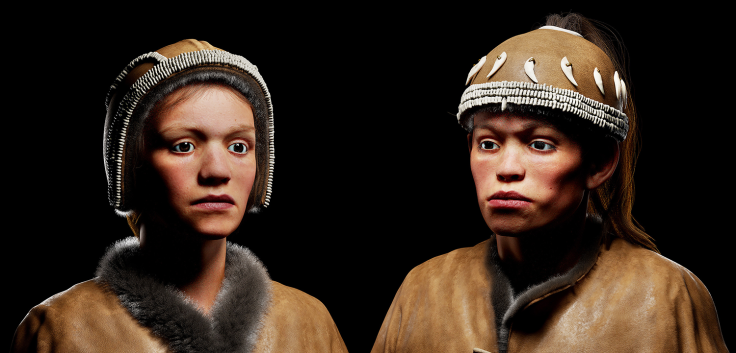VR Animation Shows What 30,000-Year Old European Homo Sapiens Looked Like

For those of us interested in the evolution of our own species, and all the other species of the Homo genus before us that went extinct, knowing their physical appearance — specifically what their faces were like — may hold some interest. A new virtual reality animation, created using scientifically accurate details and actual specimen, shows what some of the earliest Homo sapiens in Europe — living around Sungir in present-day Russia — looked like.
As H. sapiens left their place of origin in Africa and migrated to other parts of the world, they encountered other human species, such as the Neanderthals, in some of those places, including in Europe. However, the settlement in Sungir — dating back to between 32,000 and 28,000 years ago — was definitely populated by H. sapiens, making it one of the earliest records of our modern ancestors in Europe.
Among the objects excavated from the site — discovered in 1955 — are very well-preserved remains of two children who could have been siblings. The skulls of the boy, aged about 13, and girl, 2-3 years younger, were used by Russian visualization studio Visual Science and the Institute of Ethnology and Anthropology of the Russian Academy of Science to recreate what their faces would likely look like.
3D VR facial reconstruction of 30,000-year-old Homo sapiens from Visual Science on Vimeo.
The two skulls were first laser-scanned and photographed in high-definition, and the data was then processed using a 3D-modeling program. The software relies on skull-based facial reconstruction techniques developed by Soviet archaeologist and anthropologist Mikhail Gerasimov. While the video itself explains some of the methodology used, Sergey Vasilyev, who heads the department of physical anthropology at the Institute of Ethnology and Anthropology, gave some more details to International Business Times in a statement.
“The anatomical and radiographic research methods used by Gerasimov allowed scientists to not only determine standards for the thickness of soft tissues along the face profile line, but also to reveal patterns in the distribution of the soft tissues’ thickness, depending on skull surface morphology development. The structure of particular facial elements was determined by individual morphological features of the skull. Gerasimov's successors developed techniques to restore the nose and ears. The degree of reconstruction authenticity was determined by a number of facial reconstruction projects that used the skulls of modern people, whose lifetime portraits were available. The methodology was tested mainly on forensic material,” he said.

The findings at the Sungir site — which could have been a seasonal hunting camp — also included a very large number of cultural and household artifacts, such as clothing, jewelry and beads. This allowed those creating the visualization to also clothe the two children whose faces they recreated.
The Sungir folk are possibly the ancestors of northern and eastern European people living today. The lack of physical similarities between living people today and our Paleolithic ancestors is no surprise, however, given that modern human facial features evolved only about 10,000 years ago.
© Copyright IBTimes 2025. All rights reserved.





















